
The Leper Chapel, also known as the Leper Chapel of St Mary Magdalene, is a chapel on the east side of Cambridge, England, off Newmarket Road close to the railway crossing at Barnwell Junction. It dates from about 1125.

Therfield Heath is a biological Site of Special Scientific Interest and Local Nature Reserve on the chalk escarpment just north of Therfield, Hertfordshire. Since it lies south-west of the town of Royston, it is also known locally as Royston Heath. The heath is a common on which sheep are still regularly grazed. The site offers views towards the north, over the valley of the Cam as far as Cambridge.

Byron's Pool is a 4.4 hectare Local Nature Reserve in Grantchester in Cambridgeshire. It is managed by Cambridge City Council and the City Greenways Project.

Cherry Hinton Pit is a 12.8-hectare (32-acre) biological Site of Special Scientific Interest (SSSI) on the south-eastern outskirts of Cambridge. The site consists of East Pit and most of the smaller West Pit. East Pit is part of the Limekiln Close and East Pit Local Nature Reserve, which is managed by the Wildlife Trust for Bedfordshire, Cambridgeshire and Northamptonshire under the name Cherry Hinton Chalk Pits. West Pit is a separate Local Nature Reserve (LNR).

Paradise is a 2.2 hectare Local Nature Reserve in Newnham, a suburb of Cambridge. It is owned and managed by Cambridge City Council.

Beechwoods is a 9.8 hectare Local Nature Reserve south-east of Cambridge, England. It is owned by County Farms and managed by the Wildlife Trust for Bedfordshire, Cambridgeshire and Northamptonshire.
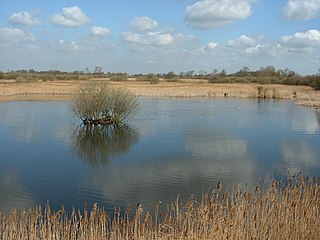
Woodwalton Fen is a 209-hectare biological Site of Special Scientific Interest in the parish of Woodwalton, west of Ramsey in Huntingdonshire, Cambridgeshire, England. It is a Ramsar wetland site of international importance, a National Nature Reserve, a Special Area of Conservation and a Nature Conservation Review site, Grade I. The site is managed by Natural England.
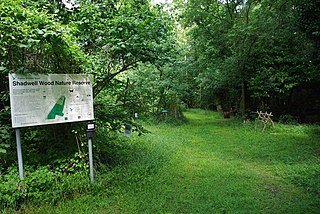
Hales and Shadwell Woods is a 15.4-hectare (38-acre) biological Site of Special Scientific Interest north-east of Saffron Walden in Essex. Shadwell Wood has an area of 7.1 hectares and it is managed by the Essex Wildlife Trust. Hales Wood is a National Nature Reserve, and it is listed in the Nature Conservation Review.

Histon Road is a 0.6-hectare (1.5-acre) geological Site of Special Scientific Interest in Cambridge. It is a Geological Conservation Review site.
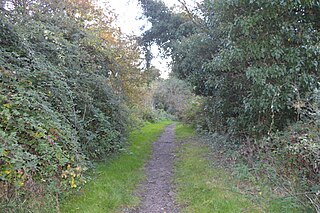
Barnwell West is a 3.8 hectare Local Nature Reserve in Cambridge. It is managed by Cambridge City Council.
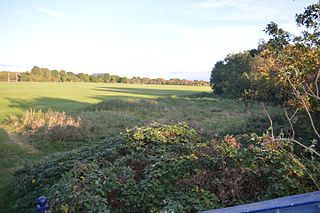
Coldham's Common is a 49.3 hectare Local Nature Reserve in Cambridge. It is owned and managed by Cambridge City Council.

Logan's Meadow is a 1.1 hectare Local Nature Reserve in Cambridge. It is owned by Cambridge City Council and managed by the council together with City Greenways Project.

Sheep's Green and Coe Fen is a 16.9 hectare Local Nature Reserve in Cambridge. It is owned and managed by Cambridge City Council.

Limekiln Close and East Pit is a 10 hectare Local Nature Reserve (LNR) in Cherry Hinton, on the south-eastern outskirts of Cambridge. It is managed by the Wildlife Trust for Bedfordshire, Cambridgeshire and Northamptonshire as Cherry Hinton Chalk Pits. East Pit is part of the Cherry Hinton Pit biological Site of Special Scientific Interest, which excludes Limekiln Close but includes the neighbouring West Pit.
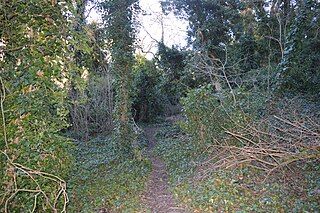
West Pit is a 4.3 hectare Local Nature Reserve in Cherry Hinton, on the south-eastern outskirts of Cambridge. It is part of the Cherry Hinton Pit biological Site of Special Scientific Interest (SSSI), which includes the neighbouring East Pit.
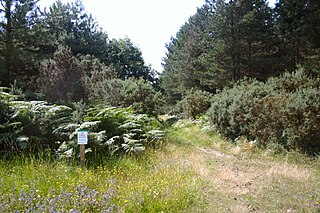
Breckland Forest is an 18,126 hectare biological and geological Site of Special Scientific Interest in many separate areas between Swaffham in Norfolk and Bury St Edmunds in Suffolk. It is part of the Breckland Special Protection Area under the European Union Directive on the Conservation of Wild Birds. It contains two Geological Conservation Review sites, Beeches Pit, Icklingham and High Lodge. Barton Mills Valley is a Local Nature Reserve in the south-west corner of the site.

Cavenham–Icklingham Heaths is a 419 hectare biological Site of Special Scientific Interest west of Icklingham in Suffolk. It is a Nature Conservation Review site, Grade I, and part of Breckland Special Area of Conservation and Breckland Special Protection Area under the European Union Directive on the Conservation of Wild Birds. Cavenham Heath is a 203.1 hectare National Nature Reserve.

Maidscross Hill is a 44.8-hectare (111-acre) biological Site of Special Scientific Interest on the eastern outskirts of Lakenheath in Suffolk. It is a Nature Conservation Review site, Grade I, and larger area of 49.8 hectares is a Local Nature Reserve.



















